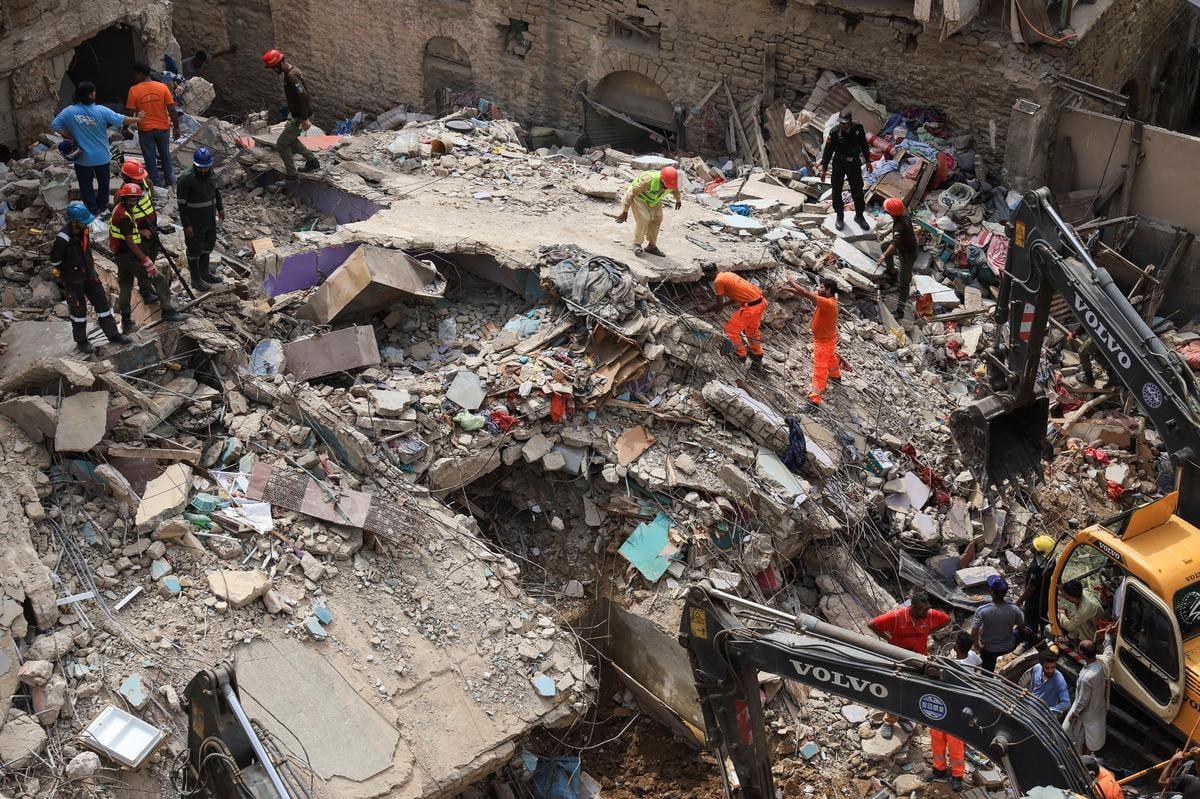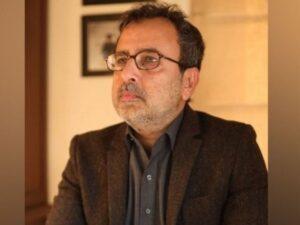Posted on July 13, 2025
Karachi:
The collapse of a five -story residential building in the Lyari Baghdadi region on July 12, which made at least 27 lives and injured much more, again exposed the deep rot in the urban governance of Karachi and preparation for disasters.
Despite official warnings, the building has remained busy. His possible collapse has met chaos scenes, a delayed rescue effort and overwhelmed emergency stakeholders sailing narrow aisles with inadequate equipment.
While volunteers and rescuers have done their best in disastrous circumstances, the tragedy highlighted a dark reality: if a ruined structure can extend the Karachi rescue system to its limits, what would happen in the event of an earthquake or emergency at the city scale?
Inadequate rescue and rescue system
In the event of a major earthquake or any natural disaster causing the collapse of several buildings in Karachi, the city’s rescue and rescue infrastructure is insufficient. At the provincial, district or municipal level, there is practically no complete disaster management or fully functional system.
Currently, under KMC and Rescue 1122, only two urban research and rescue wings (USAR) are active in Karachi. These wings include more than 150 people formed, but are equipped with limited machines and resources. There is no disaster management service at the district level and no communication system established between various rescue and rescue organizations. This lack of coordination was obvious during the recent Lyari tragedy, where delays and poor management were reported during rescue operations.
Illegal construction and bad regulationss
Mohammad Tauheed, urban planner and director of Karachi Urban Lab (IBA), citing media reports, shared that a five -story building collapsed in Baghdadi, Lyari, killing 27 people and injuring new. He stressed that Karachi has become a jungle of illegal constructions in the past two decades, and they continue without control.
The most dangerous trend, he said, is the construction of illegal apartments on several floors on small plots of 40, 60 or 80 square meters, often with several cramped portions per floor, some so badly designed that natural light and ventilation are nonexistent.
Lyari’s rescue operation has taken over 50 hours. Tauheed noted that with the estimated population of Karachi nearly 30 million. At the same time, the official census puts it at 20.3 million, the city’s rescue and rescue capacities are dangerously inadequate for its size and density.
A city at seismic risk
Karachi recently experienced light tremors, causing any damage, but seismologists warn against stronger potential earthquakes. If several buildings collapse, the absence of a functional mechanism of response to disasters in the city or the district would mean a disaster. USAR and other facilities are insufficient. The equipment is lacking, the number of personnel is low and any large -scale disaster may take days or weeks to manage.
TAUHEED recommends that a City Level Management Management Authority (TDMA) be established in each of the 25 cities in Karachi. This would allow a localized and fast response. In addition, all rescue staff must be formed according to international standards, and KMC should house a central disaster management unit which coordinates with the authorities of the city.
‘60,000 illegal buildings exist ‘
The president of the Association of Manufacturers and Developers (ABAD), Hassan Bakhshi, estimated that 60,000 buildings built illegally exist in Karachi and that more than 600 structures are dangerously dilapidated. He called for stricter laws and effective implementation to stop illegal constructions. He also expressed his preparation to support any government initiative to reinstall residents of dangerous buildings.
Bakhshi revealed that between 2017 and 2025, Karachi witnessed 12 buildings of buildings, returning around 150 lives. He identified two major causes: structurally dangerous (dilapidated) buildings and illegal constructions. “When a building is declared dangerous, the owner of the conspiracy benefits this perverse incentive; this must end,” he warned.
He proposed an action plan in three phases, a structural survey on the city level by independent experts, an immediate repair of the recoverable buildings and a reconstruction of those which are out of repair under a strict legal obligation. Bakhshi allegedly alleged that around 85,000 buildings in Karachi had been illegally extended, accusing the Sindh Building Control Authority (SBCA) and municipal organizations to facilitate corruption. He warned that the city could face a disaster if an earthquake should strike, given the poor quality and the dangerous structures. Calling SBCA A “symbol of corruption”, he demanded that the authority be divided into two departments, engineering and approvals, and urged that affairs against manufacturers and negligent officials be heard in the anti -terrorist courts because of the potentially fatal implications of their actions.
Referring to the Lyari tragedy, asked Abad, Rs. 2.5 million compensation for the families of the deceased, rs. 1 million for those who left homeless and an independent survey, excluding SBCA and municipal officers. Abad also proposed to help the Sindh government to identify and rehabilitate dangerous structures. Bakhshi also criticized the Malir Development Authority (MDA) for the collection of Rs. 25 billion without putting plots in 30 years.
Reaffirming Abad’s commitment, Bakhshi said: “We are ready to rebuild all dilapidated buildings in 700 days” and urged the Sindh government to launch housing diets similar to those announced in Punjab.
Abad’s main vice-president Syed Afzal Hameed echoes these concerns, citing administrative negligence on the Lyari collapse site and the unochered rise in illegal constructions even in the cantonment areas. They have also taken alarms about the Karachi master plan, land corruption and judicial inaction, warning that without daring systemic reforms, the city’s housing crisis will only deepen.
KMC response: limit but modernizing
The head of fire and KMC rescue, Humayun Khan said that after the collapse of the 2005 Margalla towers in Islamabad, USAR units were formed nationally. The USAR team of Karachi, a collaboration between KMC and NDMA, was the first to meet international standards.
The team includes 88 qualified personnel members, equipped with radars, sensors and life detection cameras to locate the survivors trapped under rubble. Their head office also houses a training school and three subunits, supported by more than 200 volunteers. KMC has five snorkels to save people trapped in skyscrapers and widens its services under mayor Murtaza Wahab.
Rescue 1122: Work on international standards
The spokesman Hassan Ul Haseeb of Rescue 1122 Sindh explained that their urban research and rescue wing operated according to the international directives of the United Nations. Punjab team 1122 was the first in South Asia to be certified worldwide.
The USAR 1122 team from Karachi includes 55 people, led by Commander Dr. Abid Jalaluddin Sheikh, a world -scale coach. In the Lyari tragedy, his team led operations using advanced tools such as research cameras, life detectors and radar systems to detect and save trapped individuals. The team also uses cutting tools, hydraulic equipment and exercises for removing debris.
Imran-Ul-Haq, head of rescue operations in a local social protection organization, underlined the lack of coordination between rescue agencies during major disasters. He underlined the need for a centralized communication system between all government services and private rescue, citing the Lyari incident as an excellent example of this failure.
Currently, more than 1,500 ambulances operate in Karachi, managed by a mixture of government and private organizations, but without unified response protocol.
A spokesman for the Sindh local governments department revealed that 588 buildings in Karachi had been officially dangerous. However, residents hesitate to leave. The government is working on a policy to move these residents and increase rescue and rescue capacities across the city.




